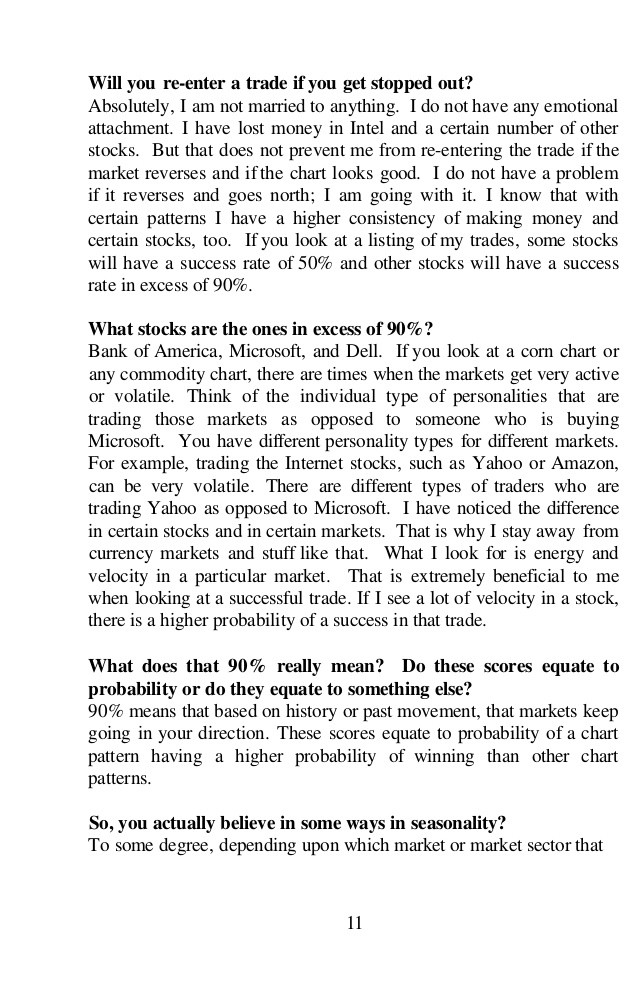Technical Analysis Lesson Moving Averages are not magnets Detroit Day Trader
Post on: 16 Март, 2015 No Comment

I read an interesting, on-line post last weekend that likened a moving average of stock prices to a magnet. Of course, every analogy has its teaching value, but each has its breakdown level as well. This one breaks down very fast, and provides little value for traders, especially novices.
The reason a MA (moving average) can be viewed as a magnet is simple. It only looks that way. Fact is all price bars tend to veer towards them eventually, because all prices correct over time; and moving averages are by nature laggards. Prices are acting in one of two ways: diverging away from their average lines or converging towards them.
There are better tools to determine this convergence and divergence. Take the MACD indicator (see image below for example) which displays the cyclical aspects of price momentum.
Fact that prices often look like theyre trying to escape the magnetic pull or being repelled by an average line is merely a visual aid concept for novices; and not a very good one, in my opinion. I think it sends a garbled message which inhibits their education of how markets work.
Understand the true nature of moving averages
Depending on price action, price always leads the averages as it should, simply because all moving averages reflect a series of prices, a data set from the past. At times, when price appears to be stagnant, the averages seem to be using the time to catch up. So, using the first analogy, which is the magnet now?
For one, a SMA (simple moving average) weighs each data point the same, whereas an EMA (exponential moving average) weighs the most-recent data point higher. Some software packages even allow data points to be weighted by volume; others are double and triple exponential vesions that track very close to price. So, for this discussion, Ill stick to the SMA (simple moving average).
Having used moving averages in various markets for many years, I can understand how some may interpret a moving average as a magnet. After all, prices do rise and fall relative to an average line of prices. However, the average has no drawing power. It merely smooths out the jaggedness of the closing price swings; that is all. That is why we use them; get rid of the noise caused by price volatility.
Any movement of price towards the moving average can be explained as a natural phenomenon called reversion to the mean.
The problem with the magnet analogy is that the fall in price oftentimes stops at a moving average level (if it’s below), but there is no guarantee which one. Will it stop at an MA4, an MA9 or MA20? How about a MA16 and MA32 which I often use?
The power of a moving average depnds on you
Realize that you control the performance of a moving average trading system the moment you select its parameter and the number of averages. So choose wisely; a 4-day average is more volatile than a 20-day average.
Even the number of strategies using moving averages vary. Think about it. You can trade when a price breaks above an average line; you can buy when a short-term average crosses over a longer term line; you can even trade a breakout from channels based on moving averages using the highs and lows instead of the closes. Or you can use the average to denote support or resistance.
What makes one average strategy better than another? Is it the number of times the prices bounce off of it or the number of fresh crosses? If so, then you dont know what that is until you see it via backtesting; and performance will be different depending on whether the market is trending or moving sideways. Point: It has no exact predictive value, just a probable future price level that depends more on market volatility.
All traders must think and deal in terms of probability, as there is never any certainty with markets. Choosing a parameter that is too fast will result in the price dropping through the average line like it wasnt there. Choosing a parameter that is too slow may result in seldom seeing price touch the line. That is why some traders prefer two or three lines.
In the case of a bull trend, price will barely test the fast average line than a slow line. However, let the prices go into a sideways mode and the price will climb and dive, above and below an average line multiples of times in a sine-wave pattern.
Realize the selection of the moving average parameter is crucial, especially if you are depending on it to act as price support or resistance. No guarantee that will happen, except that a broken clock is correct twice a day as well.
Examiner Final Comments

Moving averages are great technical tools for allowing traders to see price action in less-volatile terms over time. It also allows a trader to see if price action is trending upward or downward; that is important and useful for all traders.
Of course, you can see trends without an average provided you have enough price bars; it’s just easier with MAs as the graphic. When the price bar is above the MA, one can say the trend is bullish with full certainty at that moment. It’s the only bit of truth you have.
Some even use two or three moving averages of different time parameters. For example, I often use the SMA4, SMA16 and an SMA32. The numbers are not as important with this system as the spread, because a trader is looking for crossovers and mutual alignments; all rising or all falling for trend and signal confirmation.
Price momentum using MAs is another capability. I use the MACD (Moving Average Convergence Divergence), for example, to see the minute changes in momentum between two exponential moving averages inherent in the indicator. In that manner, I am better able to distinguish the chart’s cycle turns, but there are more ways still to use MAs.
One trader who I highly respect, Jake Bernstein, has a book out entitled, The Ultimate Day Trader. Inside he explains a moving average channel where the top line reflects 10 bars of highs, and the bottom line reflects 8 bars of lows. He then uses a momentum indicator merely as a confirmation tool when the price breaks out of the channel.
All trades are taken as bullish when the bars breakout past the top of the channel, the HMA10; and taken as bearish when they drop below the channels LMA8. In this case, I surmise the moving average could be viewed as a force field that contains prices until market momentum drives them toward breaking out of the channel.
My own channel method uses a Keltner Band based on a simple average of the close of the past 4 bars. The indicator allows me to create a channel around that average based on the average range of the past 4-day highs and lows. Then I select a multiplier for the band to address potential volatility, including support and tresistance. A value of 1 indicates the average range above and below the average. I also use values like .62 and 1.57 based on my own backtesting.
Am I curvefitting? Sure, but it’s important because it is based on backtesting that I can trust. I’m in control of my own strategy but not tied to it eternally; and that’s far better than random selection. It’s also better than blindly following some book from some guru. Again, always trust but verify by backtesting.
Bottom line is that moving averages have their place in trading. I use the crossover of the SMA4 over the SMA16 as a signal that the trend bias is now confirmed to be either bullish or bearish. For how long, I never know; but the probability is better than guessing.
Moving averages can definitely help you determine trend bias, a key prerequisite for any trading success. Selecting the parameters, though, depends on your trading style as being long or short, and your proving it out by back testing. Notice how many times I repeated that word.














